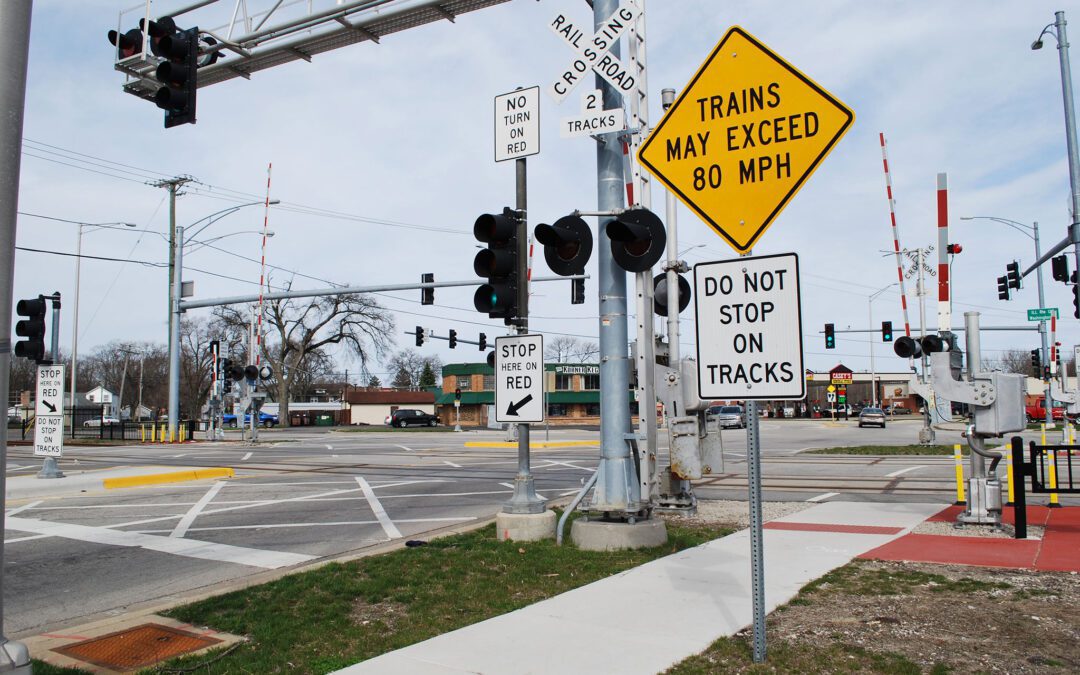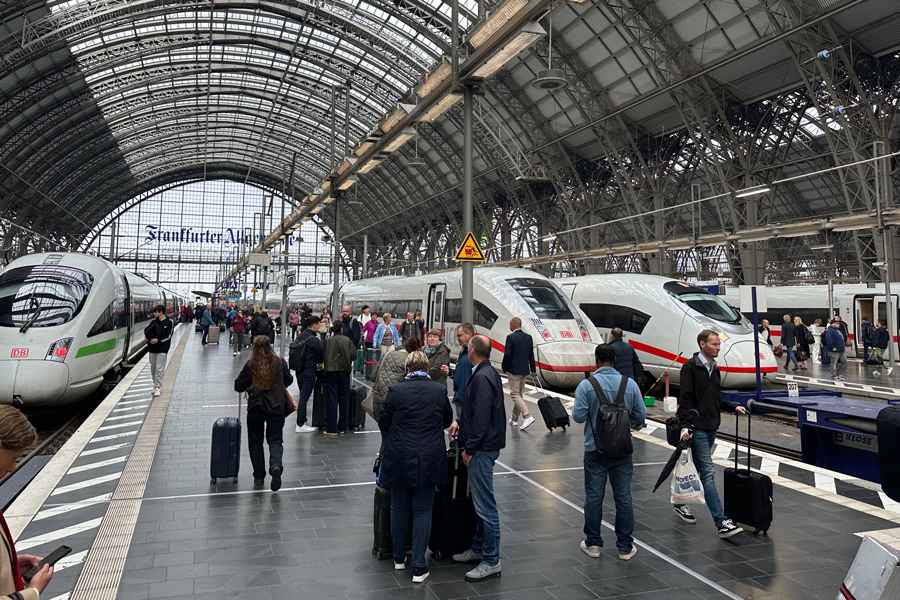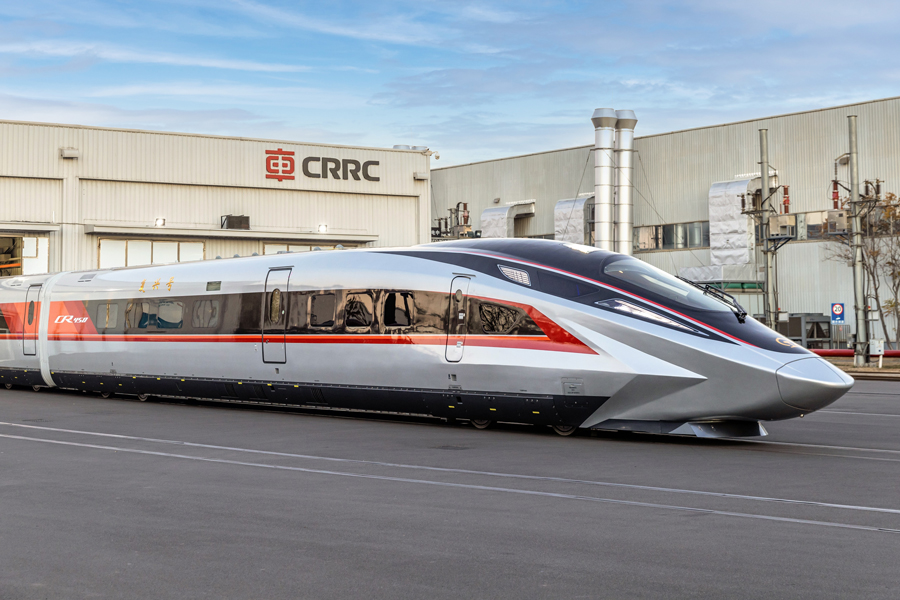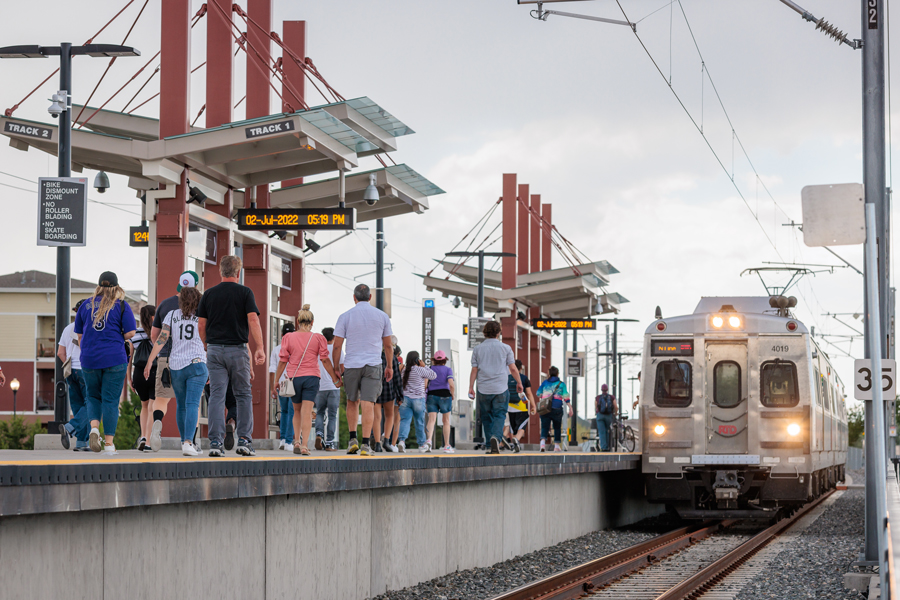Pictured above: A recently upgraded highway crossing in 110 mph territory on the Chicago - St. Louis route. Last week, the Atlantic published an article entitled “A ‘Death Train’ Is Haunting South Florida”. Once you get past the sensationalist headline (and the...
An order for new coaches is needed now
Guest post by Jim Anderson
Our Sept. 2 blog entry on scant seat availability on state-supported Amtrak routes based in Chicago, premised on an analysis of the subject by Joseph P. Schwieterman at DePaul University, was widely read – and it raised the question of seat availability, or lack thereof, on Amtrak long-distance trains.
It turns out many of those trains sell out regularly too – which is why it’s essential that Amtrak place orders at once for additional Amtrak long-distance coaches and sleeper cars.
We don’t know how many people are turned away from Amtrak trips because the train is at capacity, or who choose not to ride because the price makes the trip uneconomical. This is an elusive data point, because trains that run for two days may be at capacity for part or parts of a route, while having availability on other parts of the route.
It should suffice to say, though, that Amtrak regularly experiences sellouts on the most popular segments of its most popular routes on the most popular days. Passengers who book months in advance get these precious seats, but spur-of-the-moment travel is impossible through much of the nation. That puts a lot of travelers in cars on highways, even though they’d be on the train if they could be. It also pisses people off, and makes them less likely to consider Amtrak for future trips.
Short supply = high prices
Then there’s the price. An axiom in any business that’s selling a product that’s perishable or in limited supply is that if you’re sold out, you aren’t charging enough. This applies whether it’s a hotel, a baseball stadium, an airline – or a railroad. Superliner bedrooms between Chicago and Salt Lake City – a one-night trip – are priced between $2,339 and $2,757 through September, Bob Johnston reports in Trains.com.
We can’t blame Amtrak for pricing to the market under the circumstances. Still, this is unseemly. Amtrak is a government-owned corporation set up to serve the public, not to price-gouge or ration seats or sleeping compartments to those willing to pay the most. But with demand exceeding supply, what can you do? You can increase supply, that’s what.
Double the fleet
Amtrak has a roster of 543 Amfleet II and Superliner units in operation on long-distance routes. This includes 62-, 72- and 74-seat coaches, dining cars, sleeper cars and lounge cars. These units constitute the bulk of the accommodations on long-distance routes.
The oldest bi-level Superliner cars are now 50 years old. Rail cars, if they’re periodically refurbished, can exceed human life expectancy – some Metra coaches are from the Eisenhower era – but when they’re 50+ they do start to deteriorate irreversibly, and replacements should be ordered.
At a price of roughly $3 million per unit, replacing and doubling the Amtrak long-distance fleet by purchasing 1086 new units would cost $3.26 billion, which is minuscule in the context of the federal budget. The cost is amortized over many decades, and these units, once rolling, bring in thousands per day in fares and food and beverage sales.
A back-of-the-envelope calculation shows that a coach car with 74 seats, which brings in $100 per seat per day in revenue – a conservative estimate – generates $2.7 million per year in sales, almost covering the cost of the new equipment in one year. Obviously this does not take into account operating costs and maintenance, but it does demonstrate that investing in passenger rail cars is not government waste. It is not a boondoggle. It is wise policy, fiscally responsible policy, satisfying citizen demand and generating commerce throughout the nation.
Load factor
We believe the same principle outlined in the Schwieterman report about corridor trains applies to long-distance routes as well: The load factor – seat-miles sold as a percentage of seat-miles available – will make ridership growth on long-distance trains difficult or impossible in the coming years. A load factor of 50% makes it hard for passengers to book, unless there’s a surge in demand to travel between Glasgow, Montana and LaCrosse, Wisconsin.
In reality, demand is weighted toward travel to and from the major cities on the route. Trains fill as they get near these cities, and they empty out as they travel farther away. There will be seats available on the remote portions of a route, but generally passengers are looking to travel from remote areas to a major city or vice versa, or between major cities.
The solution is simple: Add capacity. Amtrak should order coaches, dining cars, lounge cars and sleeper cars now. Double the fleet. The cost is modest by government standards, it’ll be offset by revenue, and it’ll be good for the traveling public, especially in rural areas.
Amtrak has issued requests for proposals for some new equipment. We urge Congress to fund enough equipment to meet our goal of at least doubling the Amtrak long-distance fleet.
What can you do?
Visit the Long-Distance Fleet Action Center on our website. From there, you can:
- Send an email to U.S. Transportation Secretary Sean Duffy.
- We also urge you to contact your mayor, and ask him or her to write an email to the transportation secretary.
- And, contact your representative and senators. Amtrak capital expenditures typically require a congressional appropriation. Amtrak long-distance routes affect many members of Congress, from many states, in both parties. Investing in Amtrak is one of the most popular things a member of Congress can do.
The Latest from HSRA
Our Latest Blog Posts
Check out the latest news, updates, and high speed rail insights from our blog!





